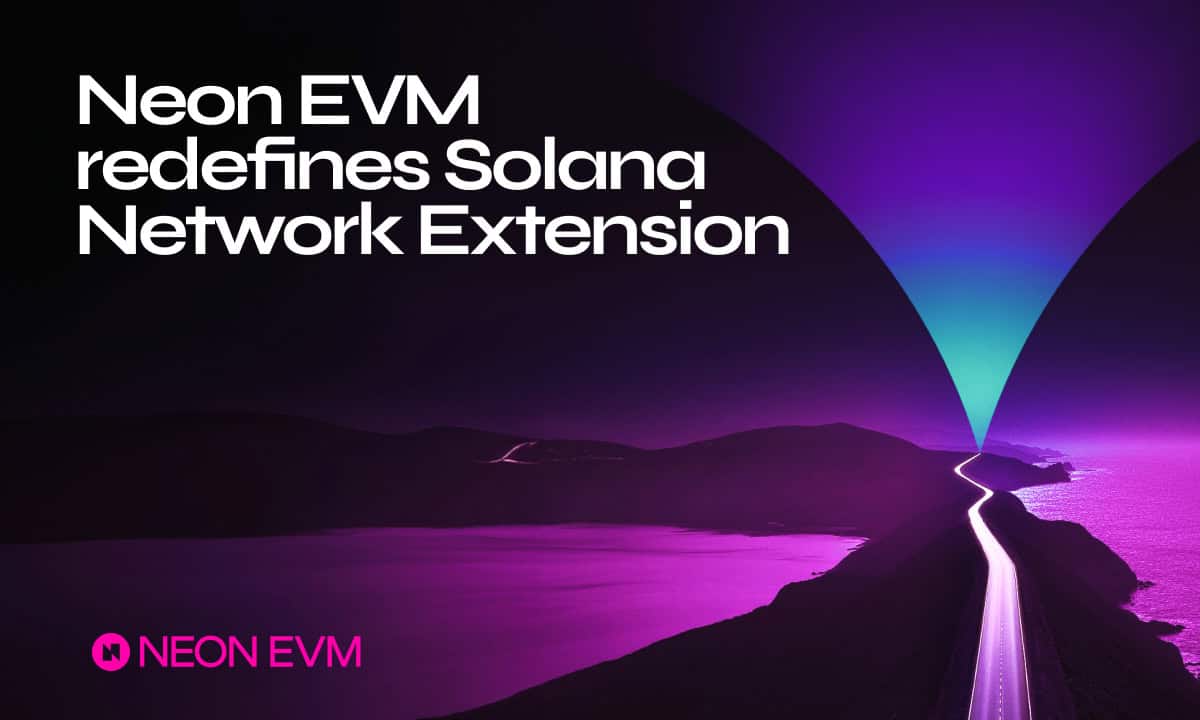
[PRESS RELEASE – London, United Kingdom, October 16th, 2024]
Neon EVM Sets the Standard for Network Extensions on Solana, Heralding a New Era of Cohesive Development.
Neon EVM, a prominent Ethereum Virtual Machine (EVM) on Solana, officially embraces the Solana Network Extension as a specialized product category, perfectly encapsulating this innovative concept. Network Extensions address a significant need within the Solana ecosystem. By providing a distinct category for projects that organically enhance Solana’s functionalities, Neon EVM delivers much-needed clarity to developers, investors, and users alike.
Historically, this categorization emerged from the unique nature of Neon EVM and several other initiatives (such as MagicBlock and MetaPlex), as these do not conform to conventional Layer 1 or Layer 2 blockchain frameworks.
In contrast to typical rollups, L2s, or sidechains, Neon EVM operates as a program directly executed on Solana’s blockchain, relying on its settlement, consensus, and data management. This positions Neon EVM within a burgeoning product category called Network Extensions—a native and composable enhancement to Solana’s fundamental capabilities, sparking engaging discussions.
The debate igniting the Network Extensions classification
The concept of Solana’s Network Extensions ignited a debate in September 2024, when co-founder Anatoly Yakovenko labeled Ethereum’s L2 solutions “parasitic.” He contended that L2s siphon liquidity and fragment the ecosystem—a perspective shared by Solana proponents, who argue that L2s foster a disjointed user experience. Conversely, Yakovenko asserted that Solana’s Network Extensions are “natively composable” and augment the core chain without draining liquidity. Supporters reiterated that these extensions are not simply disguised L2s but retain a direct connection to Solana’s foundational layer, facilitating seamless composability free from Ethereum’s drawbacks.
Network Extensions differ fundamentally from L2s.
Facilitating Ethereum Compatibility on Solana: Neon EVM as a Core Network Extension
Solana perceives its Network Extensions as specialized modules that enhance its L1 blockchain capabilities. These extensions are integrated with the Solana base layer, enabling the addition of new functionalities while maintaining the fundamental performance and composability of the underlying L1 chain.
Neon EVM exemplifies this vision by providing Ethereum compatibility for dApps while operating within Solana’s execution framework. Rather than being a standard L2, it functions as an EVM (Ethereum Virtual Machine) directly on Solana’s blockchain, ensuring compatibility with Ethereum-based applications while staying fully integrated with Solana’s L1. Unlike Optimistic or ZK Rollups, Neon doesn’t manage transactions off-chain; it operates via Neon Proxy. This means developers can deploy Ethereum dApps on Solana, utilizing Solana’s inherent capabilities—without the need for Rust coding. Neon EVM effectively integrates with Solana at the protocol level, translating Ethereum transactions straight into Solana instructions and benefiting from Solana’s advanced Sealevel transactional framework. Consequently, dApps on Neon EVM enjoy the advantages of Solana’s high throughput and exceptional scalability, allowing for parallel processing and efficient execution.
This technology positions Neon EVM as a crucial component in enhancing the accessibility and composability of blockchain applications within the Solana ecosystem.
The Solana Foundation team has emphasized Neon EVM’s identity as a Network Extension on the social media platform X, as illustrated in the post below. Anatoly Yakovenko, co-founder of Solana, has emphatically stated that Neon EVM is decidedly not an L2.
Davide Menegaldo, CCO of Neon EVM, stresses the significance of network extensions, stating, “Network Extensions provide a powerful mechanism to enhance and augment the capabilities of blockchain networks like Solana without the challenges typically associated with conventional scalability solutions.” Menegaldo elaborates on the core elements that define Network Extensions:
– Unified Liquidity: By functioning within a shared liquidity pool, Network Extensions mitigate the liquidity fragmentation often witnessed with Layer 2s or sidechains, fostering a more cohesive and efficient ecosystem.
-Enhanced User Experience: Users can easily utilize native wallets and tools, simplifying interactions and eliminating the complexities associated with multi-chain and disjointed environments.
– Remains native to the host chain, expanding core functionality: Network Extensions are intricately integrated into the base layer and do not compete with or overlap it directly. They enhance Solana’s capabilities by adding features, execution environments, storage, or consensus capabilities, and NFT functionalities, all while preserving the core attributes of the Solana environment.
Projects such as MagicBlock with Ephemeral rollups and MarginFi are developing tools, services, and infrastructure that do not neatly fit into conventional L1 and L2 categories.
To align with the definition of Network Extensions, Neon EVM will streamline the complexities of the EVM layer, ensuring a smooth experience for users. EVM developers can expedite their deployment on Solana without navigating the intricacies of Rust. Solana users can engage with these dApps using their preferred wallets, such as Phantom, Backpack, or Solflare, settling gas fees in Solana’s native currency.
This composable and user-friendly experience guarantees that while the technology behind these applications is Ethereum-compatible, the end-user enjoys a seamless experience—without having to reckon with the underlying Ethereum-like codebase driving the dApps.
Neon EVM propels innovation in Solana, surpassing traditional blockchain paradigms
The emergence of Network Extensions within the Solana ecosystem is pioneering a new standard for the evolution of blockchain infrastructure, moving beyond conventional L1 and L2 frameworks. As Solana continues its growth trajectory with upcoming innovations like Firedancer, Neon EVM is poised to play a major role in driving forward innovation, unlocking unparalleled growth opportunities for developers and users. The future of blockchain is extensible, and Neon EVM is set to spearhead this transformational journey.
About Neon EVM
Neon EVM stands as a pioneering Network Extension on Solana, crafted to effortlessly integrate Ethereum Virtual Machine (EVM) compatibility into Solana’s high-performance ecosystem. Operating natively within Solana’s base layer, Neon EVM equips Ethereum developers with a streamlined, high-throughput pathway to deploy their EVM dApps on Solana without the need for Rust coding, separate blockchain layers, or fragmented liquidity. It enhances the composability of dApps while upholding Solana’s foundational advantages. Neon EVM expands Solana’s potential, delivering a unified environment where Ethereum-based projects can thrive with the speed and scalability characteristic of Solana.
For further information about Neon EVM, users can visit neonevm.org and connect with the community on Twitter or Discord.
Binance Free $600 (CryptoPotato Exclusive): Use this link to register a new account and receive $600 exclusive welcome offer on Binance (full details).
LIMITED OFFER 2024 at BYDFi Exchange: Up to $2,888 welcome reward, use this link to register and open a 100 USDT-M position for free!








